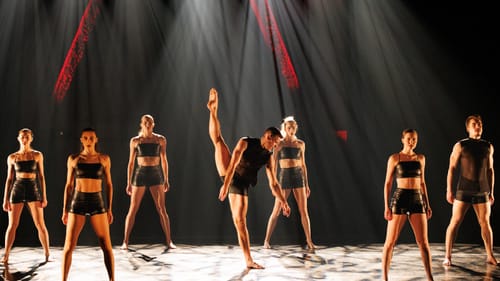Stay in the Loop
BSR publishes on a weekly schedule, with an email newsletter every Wednesday and Thursday morning. There’s no paywall, and subscribing is always free.
Lighting up the space
The art of lighting design with Alyssandra Docherty

You may give little thought to the lights at a concert, play, or performance, but lighting designers like Alyssandra Docherty play a big role in your experience. These professionals create “what an audience sees when they walk into a show,” she said. Docherty, a freelance lighting designer for dance and theater, contributed to some of my favorite moments onstage in spring 2024, from the illuminated patterns in KYL/D’s Breath into Air to the futuristic palette of Koresh Dance Company’s Hollow Apple. I sat down with Docherty to learn more about her craft.
Can you see the light?
She explained that lighting designers create the look of a show by choosing where the lights land, how long they take to fade up or down, and what colors and shadows appear in each scene. Using special software, Docherty drafts the lights in each theater space and lists the cues. The result looks a bit like architectural drawings or blueprints. Later, the cues are programmed manually. Docherty collaborates with scenic and sound designers to ensure the lighting fits the world they create onstage. Much of this work happens in the days before the show opens, during tech. Tech is “when we put all of the elements of production together,” Docherty said. Performers and directors also check spacing during this time, since most shows don’t rehearse in the theater.
Though tech usually takes a week, Docherty’s work begins when companies hire her. A month or two before the show, she completes paperwork, maps lights, and attends rehearsal. Then she moves into the theater to focus the lights before the performers arrive. Tech begins after that, and “it’s a long week of putting everything together” and making adjustments so “it works with the choreographers’ and designers’ ideas.”
When I asked what an average workday or week might look like, Docherty replied that this depends on where she is in the process of working on a show. However, “there is absolutely no normal, no average,” she said; her schedule doesn’t resemble an office job. The average tech week can be four or five 12-hour days in a row, and sometimes unexpected issues come up. During a dance festival overseas, Docherty worked until 3am dealing with an unfamiliar console and an interpreter who didn’t know lighting terms. They “had to draw pictures … and use gestures to try and understand each other,” but she learned from the experience. Now, she prepares in advance before joining a tour.

Always on
When Docherty is not in tech, she is getting ready for the next production. “I’ve been very lucky to be very booked,” she said. She truly enjoys the creative challenge of constantly working on something different. Docherty especially loves designing for dance, which she described as “a little closer to my heart.” Having worked on all kinds of shows with many different companies, she appreciates how dance “gets to be more expressive.” As Docherty put it, dance “taps into feeling” rather than focusing on a script, or even using words. Yet all dance performances (and companies) are unique, and Docherty matches the lights to the choreographer’s vision. For example, artistic director Roni Koresh likes dancers to emerge from darkness, while Christine Cox at BalletX and Brian Sanders at JUNK have their own approaches.
Despite her enthusiasm for her work, Docherty did not always intend to be behind the scenes. “When I was in fifth grade, my mom signed me up for acting classes,” Docherty remembered. Soon after, “I decided I was going to be a movie star.” She began to learn lighting in high school in northern New Jersey at a public school with “an incredible theater program.” All students took turns doing lights and scene, and they had access to a technical theater elective. Although Docherty participated in all the high school’s plays and musicals, she “really took to” lighting. While still in high school, she got her first professional lighting jobs at local dance recitals. Several graduates from her high school went on to careers in technical theater. “This little community … put out a surprising amount of talent,” she said. In college, Docherty majored in theater and began creating lighting designs from scratch.
Folks interested in lighting do not need a special program or technical equipment, though. Docherty’s advice is the same suggestion she received from legendary Broadway lighting designer Howell Binkley. Before he died in 2020, Binkley worked on 52 Broadway shows, received nine Tony nominations, and won two (Hamilton and Jersey Boys). “He told me, ‘See more theater,’” Docherty said. “I can learn something from every show I see.” No wonder Docherty is a lighting designer at the top of her game.
At top: Docherty focusing lights at the Majestic Theater in Boston. (Photo by Alyssandra Docherty.)
Sign up for our newsletter
All of the week's new articles, all in one place. Sign up for the free weekly BSR newsletters, and don't miss a conversation.

 Melissa Strong
Melissa Strong